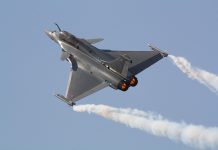
Earlier this year, UK authorities arrested six Bulgarian nationals on charges of espionage linked to Russia. Just last week, two of the individuals—Orlin Rusev and Biser Djambazov—pleaded guilty, marking a pivotal moment in the case known as the “Spy Cell” investigation.
The details of their covert operations, revealed in London’s Central Criminal Court, exposed the existence of a sophisticated espionage network spanning across Europe. Reports from Bulgaria’s National Television (BNT) and Nova TV indicate that the group targeted a U.S. airbase in Germany, where Ukrainian soldiers were being trained on advanced air defense systems, including the Patriot missile system.
Prosecutors in London disclosed that the Bulgarian operatives were planning to carry out attacks on Ukrainian personnel during their training, shedding light on the extent and reach of their operations. Evidence presented by the Crown Prosecution Service revealed that the “Spy Cell” was highly organized and equipped with a range of high-tech tools. Among their arsenal were 221 mobile phones, 495 SIM cards, 16 radio devices, 11 drones, and numerous recording devices, all used for precise surveillance, especially during operations at the Stuttgart airbase.
One operation saw the Bulgarians allegedly using advanced surveillance equipment to track the mobile phones of Ukrainian soldiers undergoing training, with the intention of monitoring them back in Ukraine. Remarkably, one of the female operatives, Katrin Ivanova, is said to have led this operation. Ivanova’s role extended beyond military surveillance; she reportedly used a hidden camera embedded in her glasses to secretly record journalist Christo Grozev during a flight to Valencia. Grozev, a well-known investigative journalist who exposed Russian intelligence operations, was another key target of the group.
The network is believed to have taken instructions from Jan Marsalek, an Austrian businessman involved in a major financial fraud scandal, who allegedly tasked Rusev and Djambazov with surveilling Grozev to understand his methods of obtaining sensitive information. According to further revelations, there were discussions about the potential kidnapping of Grozev, though this plot was never executed.
Bulgarian media have reported that the “Spy Cell” received substantial funding for these operations, although the full scope of their financial backing and connections remains under investigation. This case highlights the extent to which Russia-backed operatives are willing to go to destabilize Western interests and target individuals considered a threat to their agenda.
The case also raises significant concerns about vulnerabilities in Europe’s security infrastructure, especially considering the network’s ability to operate undetected across multiple countries. As more details emerge, there will be increased scrutiny of the networks facilitating such activities and the strategic objectives they serve.
Meanwhile, the training of Ukrainian soldiers in Germany to operate the Patriot missile systems represents a crucial component of Western military assistance in the ongoing conflict with Russia. The training, initiated in early 2023, is part of NATO’s broader efforts to enhance Ukraine’s defense capabilities, particularly against aerial threats like missiles, drones, and aircraft.
The Patriot systems, which are renowned for intercepting high-speed targets, were selected for this initiative, and Germany was chosen as the training hub due to its advanced infrastructure. Ukrainian soldiers, many of whom had combat experience but limited exposure to Western technology, underwent rigorous training to familiarize themselves with the complex radar systems, command-and-control units, and launch platforms that make up a Patriot battery.
Simulated battlefield scenarios and field exercises played a significant role in the training, helping soldiers to practice identifying and intercepting targets in real-time. The training also focused on logistical operations, from managing power supplies to loading interceptor missiles, ensuring that soldiers were equipped with the skills to integrate the Patriots into Ukraine’s broader air defense network.
Despite initial challenges such as cultural and language barriers, interpreters and pre-translated manuals helped bridge these gaps, fostering a strong sense of camaraderie between the trainers and the Ukrainian forces. By the end of the training, the soldiers were proficient in operating the Patriot systems, enabling them to better defend Ukraine’s critical infrastructure against aerial threats.
This training effort exemplifies international solidarity and underscores the importance of advanced military technology in modern warfare. For Ukraine, mastering the Patriot systems represents not only a defensive capability but a crucial measure of survival and resilience.
The Patriot air defense system, developed by Raytheon, is one of the most advanced and versatile defense platforms globally. Initially designed during the Cold War, it has evolved into a multi-role system capable of countering aircraft, ballistic missiles, and drones. At the heart of the system is the AN/MPQ-65 radar, a powerful phased-array radar that tracks multiple targets simultaneously, even at long distances.
The system’s firepower comes from its interceptor missiles, including the PAC-2 and PAC-3 variants. The PAC-3, in particular, uses a hit-to-kill mechanism for maximum effectiveness against advanced threats. The system is designed for mobility, with components mounted on rugged vehicles for quick repositioning on the battlefield.
Patriot batteries can integrate with other defense systems, such as THAAD, to create a layered missile defense strategy. With its proven effectiveness in conflicts like the Gulf War and the ongoing war in Ukraine, the Patriot system remains a critical asset in defending against the unpredictable threats of modern warfare.




